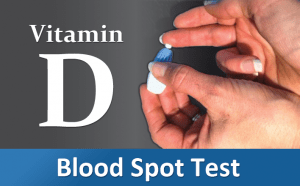Published on January 23, 2020
While many of us will not be professional football players, we might be weekend warriors or enjoy a good exercise class. What would you do with the following statement?
Football players with higher vitamin D levels were more likely to obtain a contract position in the National Football League.
This was one of the three major conclusions of the paper, Vitamin D Profile in National Football League Players.
If higher vitamin D levels help professional athletes, maybe it would help everyone’s performance, but let’s learn more…
Study Goal
 Recognizing that football players require a properly functioning muscular-skeletal system, researchers set out to analyze vitamin D levels of 80 players and compare measurements with data of their injuries and successes in two NFL seasons. Vitamin D levels were categorized as deficient (< 20 ng/ml), insufficient (between 20 ng/ml and 32 ng/ml), and adequate (> 32 ng/ml). Researchers looked at how these levels were associated with age, race, history of bone fractures, the number of NFL seasons played and overall performance.
Recognizing that football players require a properly functioning muscular-skeletal system, researchers set out to analyze vitamin D levels of 80 players and compare measurements with data of their injuries and successes in two NFL seasons. Vitamin D levels were categorized as deficient (< 20 ng/ml), insufficient (between 20 ng/ml and 32 ng/ml), and adequate (> 32 ng/ml). Researchers looked at how these levels were associated with age, race, history of bone fractures, the number of NFL seasons played and overall performance.
Black Athletes Have Lower Vitamin D Levels
For this study, 67 out of the 80 NFL players were black, 2 were Polynesian, and 11 were white. Due to the low number of Polynesians, they were grouped with white for the analysis.
Black athletes had significantly lower vitamin D levels with a mean of 26 ng/ml vs. 37 ng/ml for whites. In addition, all deficient athletes and 91% of the insufficient group were black.
Why are blacks so much more deficient in vitamin D?
The sun is the primary source of vitamin D for most Americans, accounting for 80-90% of vitamin D production (Grant and Holick, 2005).
Melanin, the pigmentation in skin, blocks ultraviolet B (UVB) – the wavelength responsible for vitamin D production. Therefore, the higher the melanin the more UVB is blocked and the longer you need to stay out in the sun to produce vitamin D. Some researchers have said that a dark-skinned black person may need 2.5 times the amount of sun a light-skinned white person would need. That means 20 minutes for one person, and 50 minutes for another. Read more here about how to get vitamin D from the sun.
Playing Time
The number of seasons played varied from 0 to 15. There was a strong association with vitamin D levels and higher number of seasons played. Athletes with adequate levels played significantly more seasons than deficient athletes, but there wasn’t a significant difference in the number of seasons played for deficient and insufficient groups.
Broken Bones
Bone fractures were experienced by 21 athletes (some with multiple fractures). After adjusting for the number of seasons played, there was a strong correlation between vitamin D levels and bone fractures.
Making the Team
After the first season, 14 players left the team and 66 started preseason training for the next season. Of those 66, 45 were placed on the regular roster, 21 were released. Those released had significantly lower vitamin D levels and were more likely to be deficient.
Results from the New York Giants
Before this study, a similar study was presented at the 2011 Annual American Orthopaedic Society for Sports Medicine. Of the 89 athletes in this study, 19% had adequate levels, 51% had insufficient levels, and 30% had deficient levels (same criteria as used above). The mean vitamin D level was 30 ng/ml in white players and 20 ng/ml in black players.
Players with at least one muscle injury within the last season had significantly lower vitamin D levels than those with no muscle injury.
Resources
Vitamin D profile in National Football League Players
JC Maroon, et al.
American Journal of Sports Medicine
May 2015
Read Paper
Elite Athletes Try a New Training Tactic: More Vitamin D
Rachel Bachman
The Wall Street Journal
January 2016
Read Story
Steelers part of study focused on connecting Vitamin D and injuries in athletes
Steelers Wire, News Story
January 2016
Read Story
Let’s Level the Playing Field with Vitamin D
GrassrootsHealth blog on vitamin D and race
Read Blog







